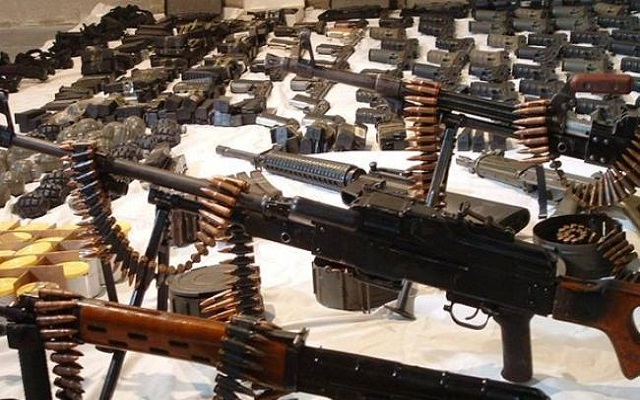A Swedish-based research institute in an overview of global arms transfers, estimated that the volume of arms transfers increased worldwide in the 2011 to 2015 period by 14 per cent compared to 2006 to 2010.
The Stockholm International Peace Research Institute (SIPRI) indicated this in a report released on Monday in Stockholm.
SIPRI said India had maintained its position as the world’s leading arms importer, while the U.S. and Russia supplied more than half of global weaponry.
It stated that India import between 2011 and 2015 stood at 14 per cent of the world’s total.
SIPRI said the importation was twice as much as second-placed Saudi Arabia, while China, the United Arab Emirates (UAE) and Australia rounded off the five largest arms importers.
The institute said it used a five-year cycle to even out fluctuations caused by a big order during any specific year.
SIPRI said the arms transfers’ database did not include small arms, and that the research was based on public sources, ranging from national and regional newspapers to specialised international journals, as well as government and industry reports.
It said a total of 58 countries export arms, led by the U.S. and Russia, which together supplied more than half of the world’s arms between 2011 and 2015.
SIPRI analysed that U.S., with 33 per cent of global exports, sold arms to 96 countries, far more than any other major supplier, SIPRI said.
“Main U.S. markets were Saudi Arabia, the UAE and Turkey.
“Combat aircraft accounted for more than half of the volume of U.S. exports,’’ it said.
SIPRI said Russia accounted for one-fourth of global arms deliveries, shipping arms to 50 countries as well as rebel forces in Ukraine.
“Three countries, India, China and Vietnam received more than half of Russia’s exports.
It noted that India imported 70 per cent of its arms from Russia, and its reliance on Russian arms imports was expected to continue despite a recent increase in U.S. imports.
“India’s imports were due to the failure of the South Asian country’s arms industry “to produce competitive indigenously designed weapons,” it said.
SIPRI said China, on the other hand, has proved “increasingly capable of producing its own advanced weapons and has become less dependent on arms imports’’.
It noted China was the world’s third-largest arms exporter, supplying almost 6 per cent of global exports, and exporting to 37 states.
Its main markets were traditional allies Pakistan and Myanmar, as well as Bangladesh.
SIPRI added that France was the world’s fourth-largest arms exporter with a 5.6 per cent share, followed by Germany and Britain. (dpa/NAN)



Leave a Reply